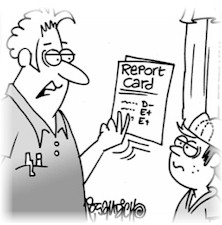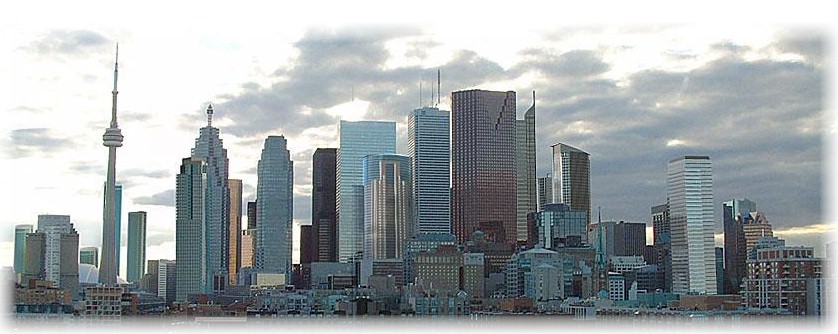and their interpretation

| Financial
Statements
and their interpretation |
 |
This page last updated 2013 Oct 01
In
Oct 2011 when Prof. Richardson taught this class it was delivered using
traditional lecture notes
In
Oct 2012 some of the lecture notes + additional web based resources where
put into this page created Oct 18th 2012
| Financial
Statements
WHY |
Report Cards
 |
The
information you get from report cards depends on how the teacher uses different
"measures", such as
|
 |
Prof. Steve Litt (MBA, Queens)
explaining that when you are looking at the info in Financial Statements it depends on whether you are inside the company or outside the company |
| Financial
Statements
What for
|
Making Decisions
 |
It
has been said that business is fundamentally about making decisions - you
have the 4Ps you
control and the 6Es
environments you respond to.
Financial Statements are essentially a tool for people to make decisions about a company, and there are many types of decisions deciding
|
| Financial
Statements
Types |
Financial Statements
- Types of companies
|
| Financial
Statements
- an introduction |
Financial Statements
- what influences them
|

| Financial
Statements
- an introduction |
The Political
- Legal - Regulatory Environment
For publically traded companies, Financial Statements are primarily governed by the regulations within the political jurisdiction they operate within. If a medium-large sized company
has their headquarters in Toronto and operates throughout Canada they are
bound by the regulations of the OSC Ontario Securities Commission
Federal Dept. of Finance
www.fin.gc.ca/act/index-eng.asp
|
| Financial
Statements
- an introduction |
The Political
- Legal - Regulatory Environment - Sarbanes-Oaxley Act
Canadian companies that operate in the U.S. may also be bound by U.S. regulations such as the 2002 Sarbanes-Oaxley Act - a law designed to offer more corporate accountability and transparency. At the time Sarbanes-Oaxley
was being discussed in the U.S., "The Toronto Stock Exchange, the British
Columbia Securities Commission, and Canadian business executives have protested
the implementation of such draconian measures, arguing that the Enron,
Worldcom, and Adelphia corporate scandals have not happened in Canada.
However, observers of the Northern Telecom profit restatement fiasco would
argue otherwise."
As Barry Shaw explains "Section
302 requires CEO’s and CFO’s to sign off on the accuracy of their financial
statements, obligating them to accept personal liability for those statements;
a new and frightening responsibility."
|
| Financial
Statements
- an introduction |
The Competitive
Environment
Most companies in the second decade of the new millenium of 2K face an increasing competitive environment, locally, regionally and internationally. For publically traded companies, the competition is intense to maintain the support from existing shareholders and attract new shareholders - without confidence from shareholders, the stock price will decline, and the market capitalization of the company will drop so low that they will not have the finances to sustain operations, and ultimately they will have to suspend operations.
|
| Financial
Statements
- an introduction |
The Economic
Environment
|
| Financial
Statements
- an introduction |
The Technological
Environment
Technology, particular as it applies to software and hardware utlized to manage data, influences how companies assemble the information that is put into a financial statement. Technology also influences
how the financial statement itself is communicated to stakeholders, shareholders,
regulatory agencies, media (newspapers, TV, radio and online).
One important consideration
that investors take into account is the speed with which companies communicate
information in financial statements. Information that is very timely can
be used to make quick decisions that can result in investors making or
losing millions of dollars so "these days" the format of the information
and the technology used to deliver it are very important.
|
| NPOs
Non Profit Organizations |
Financial Statements
are not only for companies that trade their shares on the stock maket,
but also for non-profit organizations that need to reveal their financial
details to stakeholders such as government agencies, faith-based groups,
volunteer organizations etc.
The Chartered Accountants of Canada have speakers series in which different finance topics are discussed. In November 2012 in Toronto there is a breakfast session discussing this topic see http://www.cica.ca/focus-on-practice-areas/ governance-strategy-and-risk/not-for-profit-director-series/item64269.aspx |
 |
Annual Reports
A significant component of Annual Reports are the Financial Statements. Students going for a job interview with a medium or large sized company, especially a publicly traded company, are well advised to scan the Annual Report. Things to look for would include the speech given by the CEO which outlines most of the important things the company is doing, as well as explaining how they will del with pressing problems. It can be very "convincing" if a students answers a question on a job interview with a line beginning such as "according to what your CEO said in her/his speech at the AGM, as listed in your annual report, the company will need more people with..." |
| Financial
Statements
- what is in them |
How Financial
Statements are put together
The raw data is assembled by the accounting department - traditionally this task is done by the person designated as the bookkeeper. The degree to which the sales figures are automated and compiled using the latest technology is critical to how the information can subsequently be analyzed. The bookkeeper sorts through
"Financial statements are
customarily prepared on a quarterly, biannual or annual basis. The date
of a financial statement is of considerable importance. Most are usually
drawn up on a yearly (fiscal) basis. Statements provided that are outside
of the fiscal closing are known as interim statements."
|
| Financial
Statements
- what is in them |
Financial
Statements - Balance Sheet And Profit And Loss Statement
The balance sheet
Dates
Balance sheets show
"Balance sheets are presented with assets on the left side of a page and liabilities and equity on the right. Totals of both left and right sides must balance, since total assets must equal total liabilities plus net worth." "The income or profit and loss statement is a detailed computation of the money a business makes or loses over a specific time period. Sales or service income is offset against expenses-operating and production costs. You will most often see year-end statements reflecting income and expenses for a particular calendar year." some parts from http://www.dnb.ca/understanding-financial-statements.html |
| Financial
Statements
- what is in them |
Financial
Statements - Balance Sheet - Assets
The balance sheet reports the company's assets, liabilities and networth. Assests represent all resources
- money, inventory, real estate, anything of value that indicates "how
much the company is worth", particularly if it had to be sold ...
some parts from http://www.dnb.ca/understanding-financial-statements.html |
| Financial
Statements
- what is in them |
Financial
Statements - Balance Sheet - Assets
Current Assets
|
| Financial
Statements
- what is in them |
Financial
Statements - Balance Sheet - Assets
Current Assets - Marketable Securities "Marketable securities are
found on many balance sheets. Marketable securities can include: government
bonds and notes, commercial paper, and/or stock and bond investments in
public corporations. Marketable securities are usually listed at cost or
market price, whichever is lower. Accountants will frequently list securities
at cost with a footnote indicating market price on the balance sheet date.
(When marketable securities appear on a statement, it frequently indicates
investment of excess cash.)"
some parts from http://www.dnb.ca/understanding-financial-statements.html |
| Financial
Statements
- what is in them |
Financial
Statements - Balance Sheet - Assets
Current Assets - Accounts Receivable Money it has not yet collected from customers.
some parts from http://www.dnb.ca/understanding-financial-statements.html |
| Financial
Statements
- what is in them |
Financial
Statements - Balance Sheet - Assets
Noncurrent Assets - Fixed Assets Fixed assets are
some parts from http://www.dnb.ca/understanding-financial-statements.html |
| Financial
Statements
- what is in them |
Financial
Statements - Balance Sheet - Assets
Noncurrent Assets - Other
assets
|
sign image came from
http://www.scienceofstrategy.com/science_of_decisions.htm
some of the material on this
page was found in
http://www.dnb.ca/understanding-financial-statements.html
http://www.itprojecttemplates.com/WP_SEC_BillC198.htm